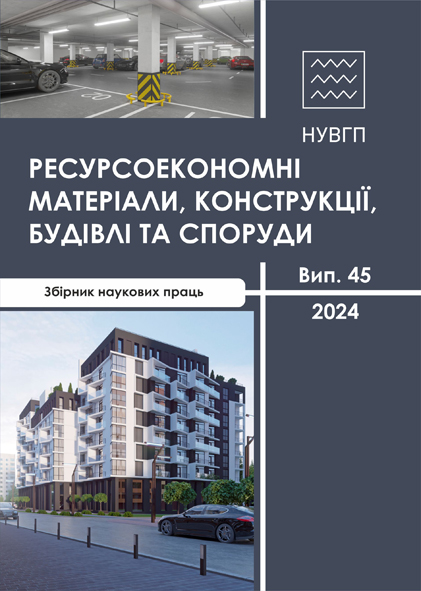ANALYSIS OF SHEAR RESEARCH AS A FORMS OF DESTRUCTION OF JOINTS OF BEARING REINFORCED CONCRETE STRUCTURES
DOI:
https://doi.org/10.31713/budres.v0i45.17Abstract
Experimental and theoretical studies of the bearing capacity of key joints of members of modern structural systems made of precast and precast-cast-in place reinforced concrete are analyzed. The shear failure form is considered, which is diverse, realized in bending and compressive, local action of the load, under uniform and non-uniform (with the presence of a tensile zone) stress states, in members with different geometric shapes and load transfer schemes. The influence factors obtained in the experiment are classified. Adhesion of old concrete to new, uneven distribution of stresses along the length of the joint (number of keys) and the width of the seam are included in the parameters of the seam. The parameters of a key include geometric ones (dimensions and their ratio, the angle of inclination of the supporting surfaces, the shape of the working section); strength characteristics (type and class) of concrete; reinforcement (strength, its quantity and location along the shea plane); the presence or absence of compression (tensile). The influx of factors is assessed ambiguously. Joint calculation methods are, as a rule, based on an empirical basis, which has known significant disadvantages. Using a general design method based on the theory of plasticity of concrete is promising to calculate the bearing capacity of joints. The model of an ideally plastic body leads to simple calculations for complex uniform stress-strain states. A variational method in the theory of concrete plasticity has been developed at the National University "Yuri Kondratyuk Poltava Polytechnic". The method has been tested in the calculations of the bearing capacity of reinforced concrete and masonry structures under axial and local compression, combined action of vertical and horizontal loads, under the action of shear forces in areas near supports. The method is proposed as a technique for calculating joints under the shear.

